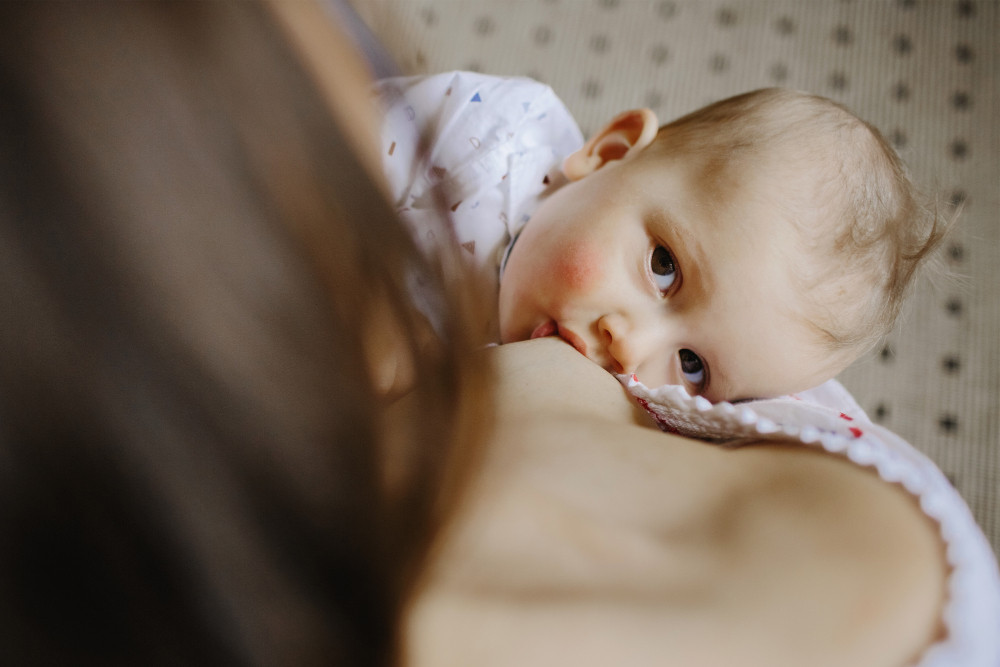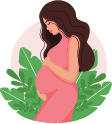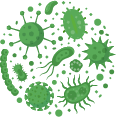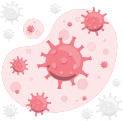Definition
A breast abscess is an accumulation of pus under the skin of the breast caused by an infection. Breast abscesses most often affect women who are breastfeeding and are usually very painful.
Causes
Breast abscesses form when someone has a breast infection and is not treated quickly. This infection will damage the breast tissue so that the pockets in the breast fill with pus.
This infection comes from bacteria on the mother's skin or from the baby's mouth. Bacteria can enter through:
- Skin wounds
- Cracked nipples
- Milk ducts
In breastfeeding mothers, breast abscesses are generally caused by infections with Staphylococcus aureus, Streptococci, and anaerobic bacteria.
Risk Factor
Breast abscesses mainly occur in women who are breastfeeding. According to a literature review in 2020, breast infections occur in 2-3% of breastfeeding women. However, breast abscesses can occur in anyone, including men.
Some factors that can increase a person's risk of developing a breast abscess are:
- Smoking
- People who have piercings or breast surgery, such as breast implants
- People with diabetes
- People with obesity
Breast abscesses that are not related to breastfeeding are more common in groups of people with the above risk factors, especially in people who smoke and are obese.
Symptoms
Common symptoms of a breast abscess include:
- Breast pain
- Breast skin redness
- Swelling
- Skin feels warm
- Nipple discharge
- Discharge from other parts of the breast
- A lump in the breast filled with pus
- Decreased milk production
- Headache
- Fever
- Chills
- Nausea
- Vomiting
- Flu-like symptoms
Diagnosis
Symptoms of breast abscess and breast infection are very similar. To distinguish between the two diseases, the doctor will perform a thorough physical examination on the patient. In addition, the doctor will ask about the complaints felt by the patient and previous medical history, such as a history of breast abscess.
To support the diagnosis, the doctor can perform an ultrasound examination of the breast. If there is an indication of a breast abscess, the doctor can take a sample of the abscess. Taking a sample of the abscess is also to help rule out other possible causes, such as cancer or breast cysts.
Management
After the examination, the doctor can determine the patient's diagnosis. If what happens is a breast infection, the doctor will prescribe oral antibiotics first. However, if symptoms do not improve within two days after giving antibiotics, see a doctor immediately.
If after the examination the patient does have a breast abscess, the doctor will remove the pus from the breast by:
- Using a needle. The needle is injected into the abscess, and the pus will be removed. This procedure is usually done if the abscess is less than 3 centimeters in size.
- By creating a small incision in the breast, the pus is then removed.
If the pus that is removed leaves a large gap in the skin, the doctor will close it and press it with sterile gauze to help the healing process.
The patient is allowed to go home after all procedures are complete. Warm compresses and painkillers can be used to help relieve pain after the procedure. Antibiotics are given to prevent and relieve infections in the future. Take antibiotics according to your doctor's instructions.
The healing period for a breast abscess takes several days to 3 weeks. It depends on the severity of the infection. For mothers who are breastfeeding, it is a good idea to consult a doctor about whether breastfeeding is allowed during the healing period.
Consult a doctor if you experience symptoms of a new infection, including:
- Pus drainage from the surgical site or medical procedure
- Redness
- Swelling
- High fever
Complications
Complications of breast abscess therapy include:
- Scar formation
- Changes in the nipple and/or breast tissue
- Asymmetrical breasts
- Fistula formation
Meanwhile, untreated infections can lead to life-threatening complications called sepsis. It occurs as a result of the infection spreading throughout the body, including vital organs.
Possible signs of sepsis include:
- Fever and chills
- Pale, clammy, and cold skin
- Increased pulse
- Decreased blood pressure
- Increased pain
- Confusion
- Shortness of breath
Prevention
Applying moisturizer to the nipples can help prevent them from becoming cracked, which is an entry point for bacteria into the body.
Breastfeeding women should avoid the following to prevent mastitis:
- Very full breasts
- Long periods between feedings
- Pressure on the breasts, such as from bras or clothing
In addition, a good baby latch can also help prevent mastitis. Signs of a good latch include:
- Pain-free breastfeeding
- The dark skin around the nipple is more visible above the baby's lips than below the baby's lips
- The baby opens his mouth large and wide
- The baby's chin touches the breast
- The baby's cheeks are round and full
- A fast suck that turns into a slow and deep suck
Because breast abscesses occur as a result of mastitis, getting treatment for mastitis as soon as possible can help reduce the risk of developing a breast abscess and prevent recurrence.
When to See a Doctor?
It is best to consult a doctor if:
- Breasts are painful, red, and feel warm
- A lump or swelling in the breast
These symptoms can be a sign of a breast infection or abscess. In addition to the above symptoms, fever and feeling unwell are also symptoms of a breast infection or abscess.
Looking for more information about other diseases? Click here!
- dr. Alvidiani Agustina Damanik
Breast abscess. (2022). Retrieved 27 September 2022, from https://www.nhs.uk/conditions/breast-abscess/.
Breast Abscess: Causes, Symptoms, Treatment, and More. (2022). Retrieved 27 September 2022, from https://www.healthline.com/health/breast-abscess#recovery.
What to know about a breast abscess. (2020). Retrieved 27 September 2022, from https://www.medicalnewstoday.com/articles/breast-abscess.







